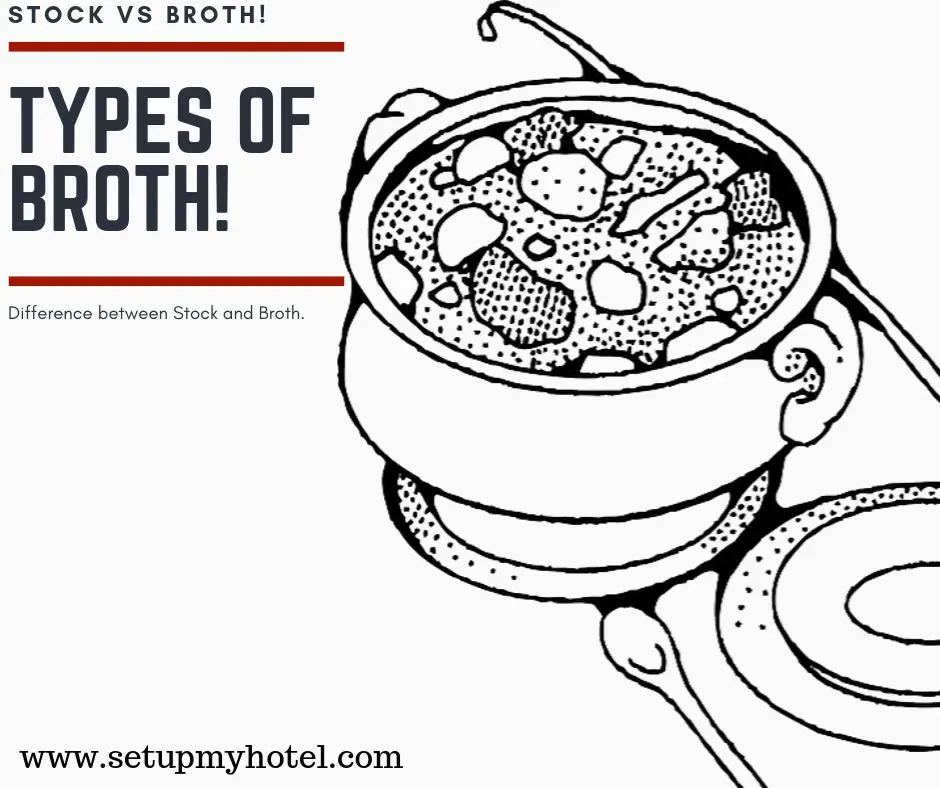What is Broth? How does it differ from Stock?
BrothBroth -� Is a flavourful liquid obtained from the long simmering of meats and/ or vegetables. and stock are similar in technique and cooking time. Meat, Fish, Poultry, and Trimmings of vegetables can be roasted or seared are slowly simmered along with aromatic vegetables, spices, and herbs to produce a clear flavorful liquid with some body to it.
The major distinction between Broth and BouillonClear but not clarified stock; usually served as a soup but can also be made into a sauce. (Stock) is that Broth can be served as it is, whereas Bouillon or Stock are used in the production of other dishes. In other words, the stock is left unseasoned for use in other recipes, while the broth is salted and otherwise seasoned and can be served/eaten alone.
1. Meat glace
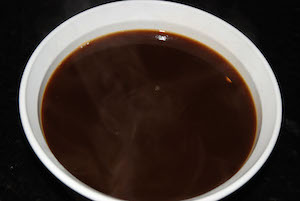
Meat glace is the reduced stock containing higher percentages of gelatin. Meat glace takes eight to twelve hours. It can be prepared from any kind of stock but the technique works best for the stocks that are rich in gelatin. For this reason, meat glace is prepared from the knucklebones which are rich in gelatin. Stocks containing too little gelatin need too long to reduce and by the time it reduces the flavor of the stock is compromised.
2. Fish Demi-Glace
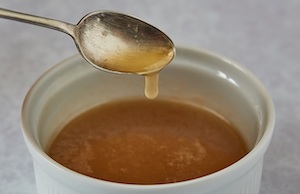
Fish glace is prepared in the same way as meat glace except that the fish stock is used instead of meat stock. Fish glace has a strong fishy taste and flavor, which it can impart to sauces if used in more than a tiny amount. It is better to use a reduced court bouillon. If the concentrated fish stock is required then a double fish stock is preferable.
3. JusThin gravy as made from the drippings of a roast joint; or a thickened sauce known as jus lie. Broth
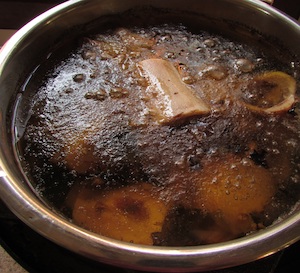
The term jus traditionally describes the light, natural liquid derived from the drippings of the roasts. Because natural juices are the most satisfying of all sauces, chefs often use a variety of techniques to stimulate the flavor of the natural juices.
Long and slow cooking is not the only stock or jus with the flavor of specific meat. Although slow-simmering will extract much of the gelatin and nutritive element from meats and bones, much of the character, freshness, and individuality of the meat is lost. Many chefs mistakenly assume that the best way of extracting and intensifying the character of the meat is by long cooking and subsequently reduction.
The best method for extracting the best flavor from the meats is to brown them in a heavy bottom pan with a small amount of mirepoix until their juices are released. Juices obtained by this method are often termed “jus”.
4. Essences
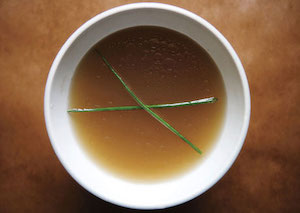
Essences are the extracts made from vegetables and used as a last-minute flavoring for sauces; an essence is to vegetables what jus is to meats. In classic sauce making essences are used for final flavouring. The most common essences are mushroom essence, truffle essence, and vegetable essence. Any essence is made from its cooking liquid. Simmering the ingredients in water for 15 minutes makes cooking liquid. When the cooking liquid is reduced to 1/4th then it is termed as essence.
5. Remouillage
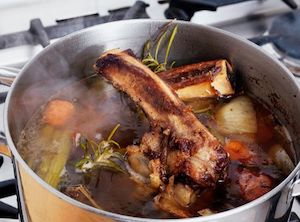
The word translates as “rewetting”, which is a good way to think of the way that remoulade is made. Bones used to prepare a “primary stock” are reserved after the first stock is strained away from the bones. The bones are then covered with water, and a “secondary stock” is prepared.
6. Estouffade
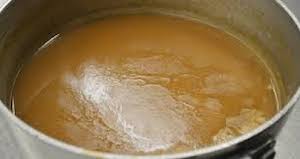
The classic formula for Estouffade set down by Escoffier is virtually identical to what was then known as a brown stock. There are differences to note, however, Estouffade is prepared by simmering together browned meaty veal bones, a piece of fresh or cured pork, and the requisite vegetables and other aromatic.
Broth Vs Stock
When it comes to cooking, there are many terms that can be confusing, especially if you’re new to the culinary world. Two terms that are often used interchangeably are broth and stock. While they may seem similar, there are some key differences between the two.
Broth is typically made by simmering meat, vegetables, and herbs in water. The ingredients are cooked for a shorter period of time compared to stock, usually less than two hours. Broth is usually seasoned with salt and pepper and can be consumed as a standalone dish or used as a base for soups, stews, and sauces.
Stock, on the other hand, is made by simmering bones, meat, vegetables, and herbs in water for a longer period of time, usually four to six hours. The goal of making stock is to extract as much flavor and nutrients as possible from the ingredients. Stock is usually unseasoned and used as a base for soups, stews, and sauces.
Broth and stock are both flavorful liquids used in cooking, but there are some key differences between the two in terms of ingredients, preparation, and uses. Here’s a breakdown of the distinctions between broth and stock:
Broth:
- Ingredients:
- Broth is typically made with meat, vegetables, and seasonings.
- It often includes bones, but the emphasis is on the meat.
- Cooking Time:
- Broth is usually simmered for a shorter period, typically 1-2 hours.
- The shorter cooking time helps retain a lighter, more immediate flavor.
- SeasoningSeason / Seasoning - 1) To enhance the flavour by the addition of salt or other ingredients. 2) To m...:
- Broth is seasoned with salt and can include a variety of herbs and spices.
- It is meant to be a standalone, flavorful liquid suitable for immediate consumption.
- Clarity:
- Broth is usually clear and may have a lighter consistency.
- It is often used as a base for soups, stews, or consumed on its own.
- Versatility:
- Broth is versatile and can be used as a cooking liquid for grains, pasta, or as a base for sauces and gravies.
Stock:
- Ingredients:
- Stock is traditionally made with bones, vegetables, and seasonings.
- The emphasis is on extracting flavors from the bones, cartilage, and connective tissues.
- Cooking Time:
- Stock requires a longer simmering time, often 4-6 hours or more.
- The extended cooking time helps break down collagen in the bones, resulting in a richer, more viscous liquid.
- Seasoning:
- Stock is generally less seasoned during the cooking process.
- It is often used as a base for other dishes, and additional seasoning is added when incorporating it into recipes.
- Clarity:
- Stock may have a cloudier appearance due to the prolonged extraction of gelatin from bones.
- It serves as a foundational ingredient for sauces, soups, and stews.
- Versatility:
- Stock is a building block for many recipes and is used as a base for sauces, soups, stews, and various culinary applications.
Summary:
- Broth is lighter and more immediate, often made with meat as the primary ingredient and simmered for a shorter time. It is versatile and can be used as a standalone liquid or cooking base.
- Stock is richer and more concentrated, made with bones as the primary ingredient and simmered for a longer duration. It serves as a foundational element in cooking, providing depth and complexity to a variety of dishes.
In practice, the terms "broth" and "stock" are sometimes used interchangeably, and the distinctions can vary depending on regional and culinary traditions. Modern cooking practices often blur the lines between the two, and the choice between broth and stock depends on the specific culinary application and desired outcome in a recipe. Both broth and stock have their own unique flavor profiles and can be used in a variety of dishes. Knowing the difference between the two can help you choose the right ingredient for your recipe and achieve the desired result.
